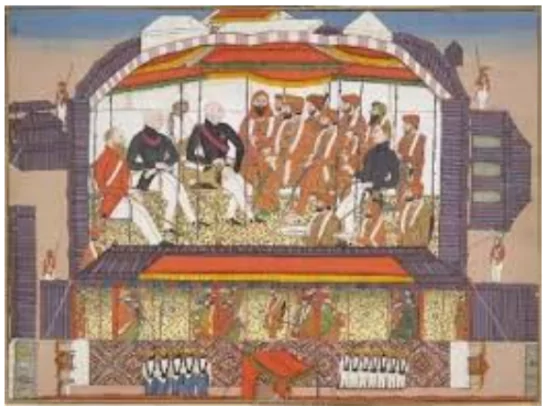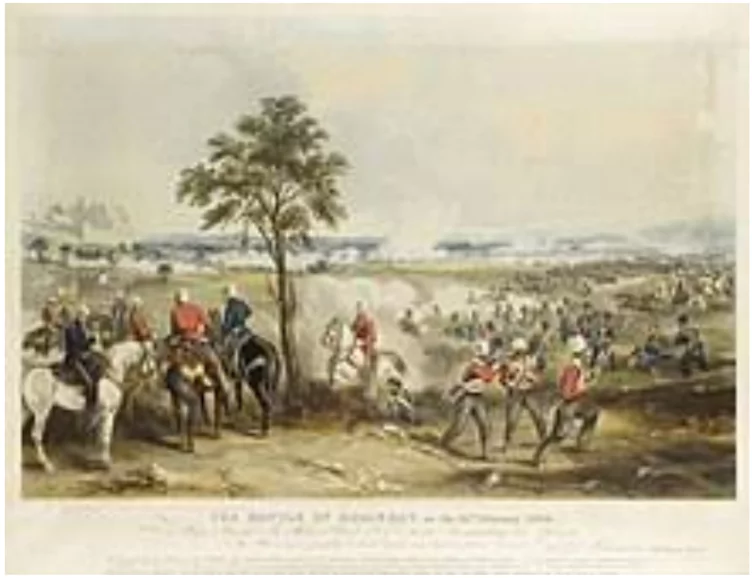Anglo-Sikh Wars, fought between the Sikh Empire and the British, were crucial in Indian history. The Anglo-Sikh Wars resulted in the fall of the Sikh Empire and the expansion of British rule.

Anglo-Sikh Wars were two significant military conflicts fought between the Sikh Empire and the British East India Company in the mid-19th century. These wars ultimately led to the British annexation of Punjab, marking the fall of the last major independent kingdom in India before British rule expanded across the subcontinent.
Read on to explore the causes, battles, outcomes, and treaties associated with the Anglo-Sikh Wars while addressing key questions like how many Anglo-Sikh wars were fought and the significance of each war in shaping Indian history.
The Anglo-Sikh Wars were a series of conflicts fought between the Sikh Empire and the British East India Company in the mid-19th century, ultimately leading to the British annexation of Punjab. These wars were a result of rising tensions between the two powerful entities following the death of Maharaja Ranjit Singh in 1839.
The wars can be divided into two main conflicts:
While some sources speculate about a Third Anglo-Sikh War, no such formal war occurred. Instead, Sikh resistance continued through revolts and uprisings after Punjab was annexed into British India. The Anglo-Sikh Wars marked the end of the Sikh Empire and strengthened British rule in India, making Punjab a key region for British military recruitment and governance.
The Sikh Empire was established under Maharaja Ranjit Singh, a brilliant military leader and administrator who unified the various Sikh factions (Misls) and expanded the empire across Punjab, Kashmir, and parts of Afghanistan. His well-trained European-style army made the Sikhs a formidable force in India.

However, after his death in 1839, political instability, internal conflicts, and British expansionist policies created tensions that eventually led to the Anglo-Sikh Wars.
There were two primary Anglo-Sikh Wars fought between the Sikh Empire and the British East India Company. These conflicts occurred in 1845-46 and 1848-49.
While some smaller fights and resistance movements continued, these two wars were the main engagements that concluded with the annexation of Punjab by the British.
The First Anglo-Sikh War was a major confrontation between the British East India Company and the Sikh Empire. It was fought across the Sutlej region, primarily in present-day Punjab. The war began in December 1845 and ended in March 1846 with the signing of the Treaty of Lahore. This conflict significantly weakened the Sikh Empire, which led the way for further British intervention.

The First Anglo-Sikh War was fought between the well-organized Sikh Khalsa Army and the highly experienced forces of the British East India Company. Both sides brought formidable military strength to the battlefield, leading to a series of intense confrontations.
The war concluded with the Treaty of Lahore in March 1846. The treaty terms were harsh on the Sikhs:

Additionally, under the Treaty of Amritsar (1846), the British sold Kashmir to Gulab Singh, marking further fragmentation of the Sikh Empire.
Following the First Anglo-Sikh War, dissatisfaction steamed in Punjab due to the presence of British officials and interference in local governance. The Second Anglo-Sikh War erupted in 1848 when uprisings in Multan escalated into a full-scale rebellion against British rule. This conflict resulted in the complete annexation of Punjab.

The Second Anglo-Sikh War saw the remaining factions of the Sikh army taking up arms against the British East India Company. Despite limited resources and internal divisions, the Sikh forces displayed remarkable resilience.
The war concluded with the formal annexation of Punjab through the Treaty of Lahore (1849). Key outcomes included:

The Anglo-Sikh Wars played a crucial role in shaping the political and military landscape of India in the 19th century. These wars not only led to the annexation of Punjab but also had far-reaching consequences for the British administration and the Sikh community.
The Anglo-Sikh Wars were a key movement in shaping British rule in India. Despite their military prowess, the Sikhs were defeated due to internal conflicts, betrayal by their own commanders, and superior British strategy. The annexation of Punjab marked the final phase of British dominance in India before the Revolt of 1857. However, Sikh pride remained intact, and their contributions to India’s future freedom struggle were significant.
Ready to boost your UPSC 2025 preparation? Join PW’s UPSC online courses today!
The Anglo-Sikh Wars were two battles fought between the Sikh Empire and the British East
The First Anglo-Sikh War occurred in 1845-1846, and the Second Anglo-Sikh War was fought in 1848-1849.
The Anglo-Sikh Wars were caused by political unrest, territorial disputes, and British expansionist policies.
The Anglo-Sikh Wars led to the annexation of Punjab by the British, ending the independent Sikh Empire.
Maharaja Ranjit Singh led the Sikh Empire before the wars, while leaders like Lal Singh and Tej Singh commanded Sikh forces.
The Anglo-Sikh Wars expanded British rule, marked the end of Sikh sovereignty, and influenced subsequent colonial policies.

<div class="new-fform">
</div>